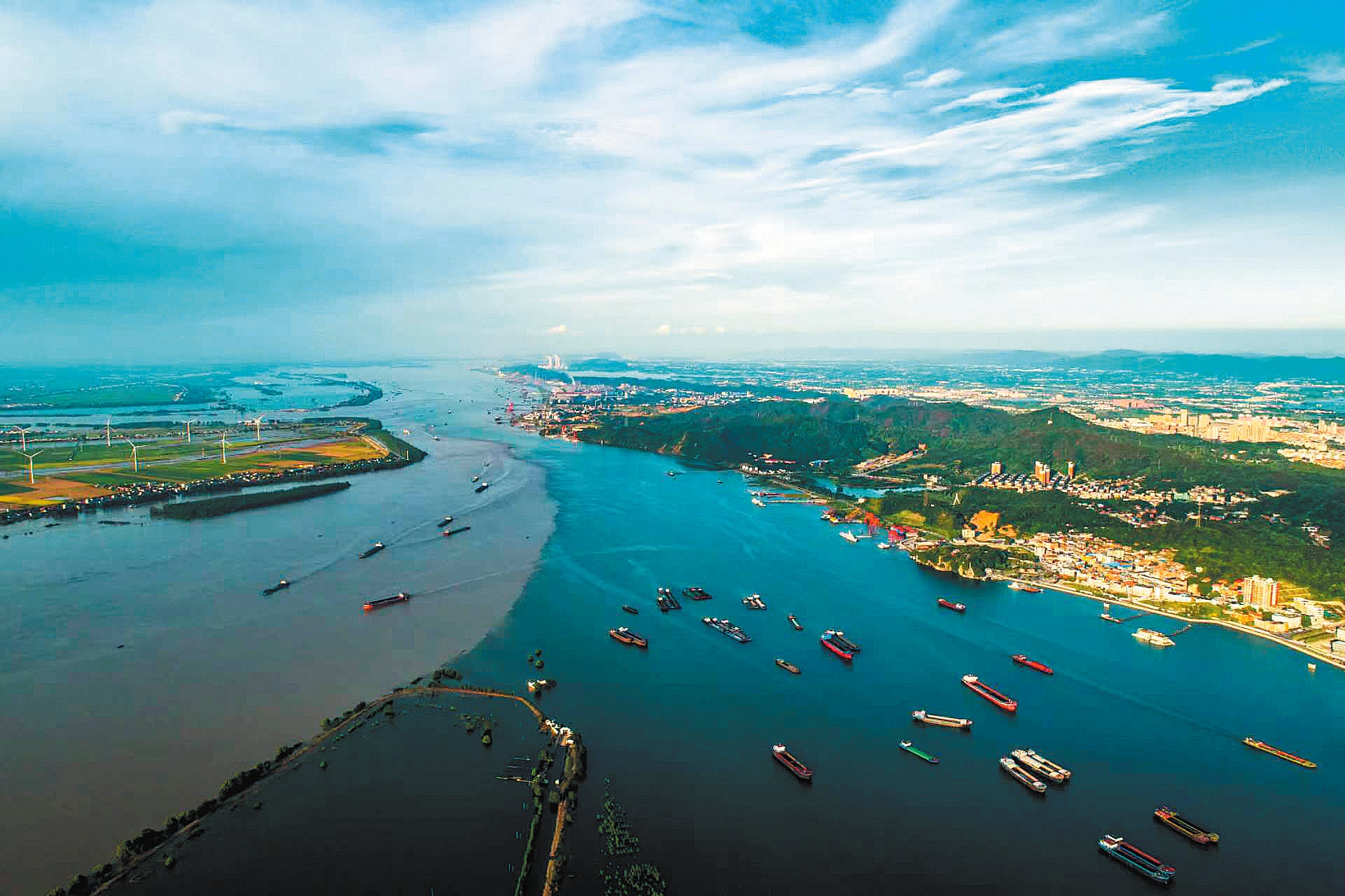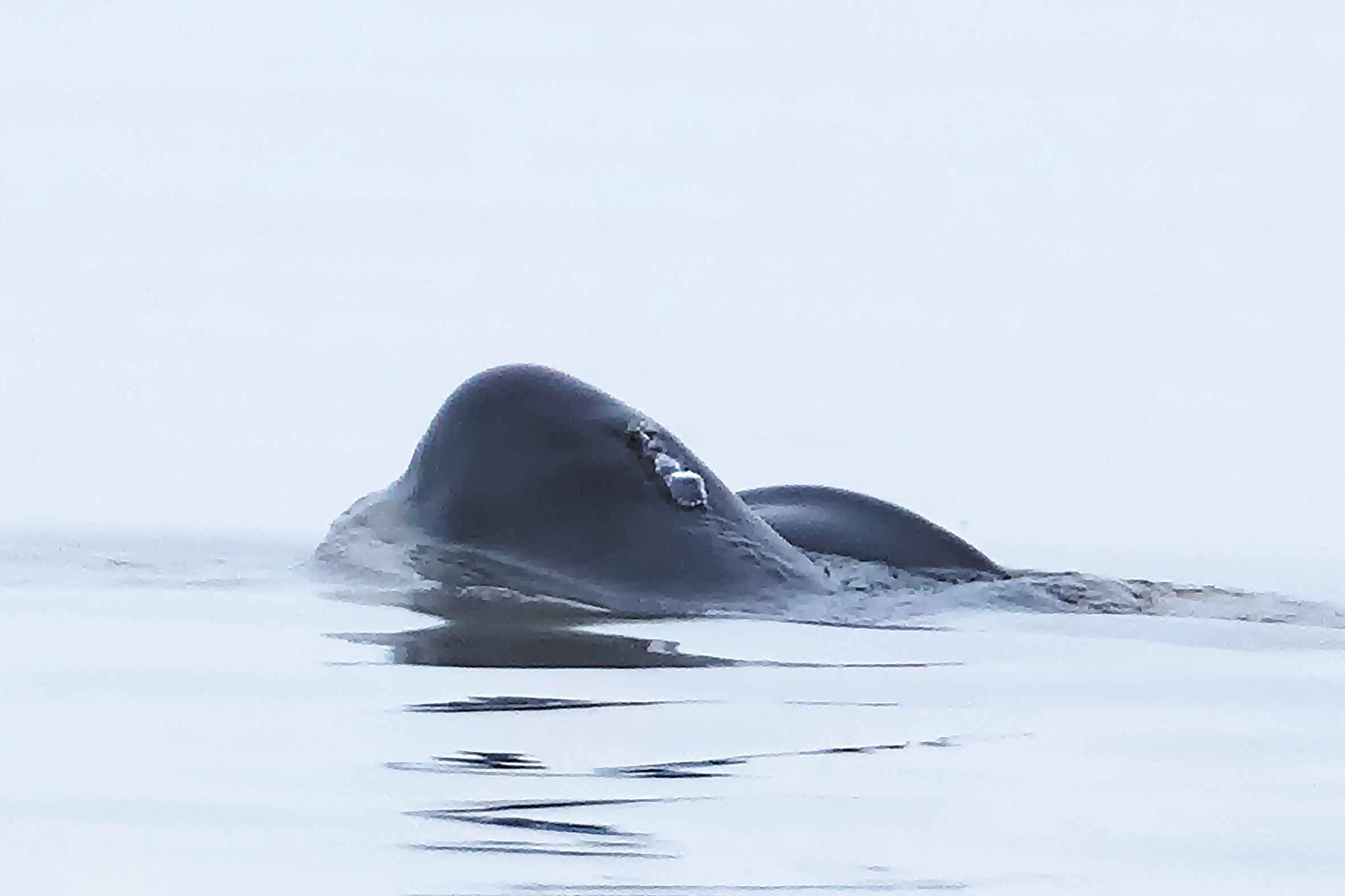Numbers of Yangtze finless porpoise increasing
THE ARTICLES ON THESE PAGES ARE PRODUCED BY CHINA DAILY, WHICH TAKES SOLE RESPONSIBILITY FOR THE CONTENTS

In Jiangxi province’s Hukou county, the waters of the Yangtze River converge with the Poyang Lake. Here, a patrol team, led by Shu Yin’an, is witnessing firsthand the resurgence of the elusive Yangtze finless porpoise.
Shu, 57, born to a family of fishers, has put down his net to take up the mantle of environmental protection and ecological restoration along Asia’s longest river.
In the 1980s and 1990s, the Yangtze finless porpoises were a relatively common sight, according to Shu. But by the early 2000s, predominantly due to human activities, their numbers started to dwindle.
“Weeks would pass without a single glimpse of these majestic creatures,” he said. “But it wasn’t just the porpoises, all fish populations were decreasing, leading to empty fishing trips sometimes.”
Four years into a fishing ban on the Jiangxi section of the Yangtze River Basin, which includes Poyang Lake, along with other conservation efforts, Shu said he’s starting to notice a significant increase in fish, as well as the porpoises.
“The sightings of porpoises have become more frequent, and we can sometimes spot a mother porpoise and its pup,” he said.
The Yangtze finless porpoises are distributed in the middle and lower reaches of the Yangtze River Basin. That includes Poyang — China’s largest freshwater lake, as well as Dongting Lake and the mainstream of the Yangtze. Classified as critically endangered and listed as a national first-class protected wild animal, they are believed to be a vital indicator of the health of the Yangtze ecosystem due to their sensitivity to environmental changes.

According to surveys conducted every five years by the Ministry of Agriculture and Rural Affairs, between 2006 and 2017, the porpoise population in the mainstream of the Yangtze plummeted from 1,225 to 445, a drop of 64 per cent.
As for the whole Yangtze River Basin, the situation was similarly severe. Hao Yujiang, a researcher at the Institute of Hydrobiology of the Chinese Academy of Sciences, wrote in an article published last year that the porpoise population shrank in the early 1990s from 3,600 to 1,800 by 2006, and further dropped to about 1,040 in 2012. The ministry’s survey shows the porpoise population in the whole Yangtze River Basin in 2017 stood at 1,012.
A series of measures have been taken including protecting the porpoises’ habitats, carrying out relocation, and establishing artificial breeding bases and science education wings in adequate research institutions and aquariums.
The efforts have yielded positive results. A survey by the national agricultural authority in 2022 showed that the porpoise population had rebounded to 1,249, marking a turnaround from the previous decline.
Poyang Lake in Jiangxi serves as a vital habitat for the porpoise. The 2022 survey showed there were 492 finless porpoises in the lake alone, which accounted for nearly 40 per cent of the total population.
The fluctuation of the water level in the lake is so huge that its surface area varies dramatically, and this can also cause problems for marine life. The lake experiences its highest water levels in July, with it gradually receding to the dry season from October to March.
“In dry seasons, groups of porpoises would swim into the saucer-shaped lakes that form, which poses a big risk to their safety,” said Yu Xianhua, head of Hukou county’s aquatic life protection centre. In addition, the extraction of sand and minerals from the Poyang Lake bed would leave deep pits that could strand the porpoises.
Yu said when porpoises are stranded in “plate lakes” — those separated from the lake’s main body during the dry season — and deep pits, his protection team and similar organisations take emergency measures to rescue them, including feeding and relocating them.
In February last year, when Jiangxi was hit by a serious drought, more than 100 porpoises in Poyang Lake were driven from shallow waters into deeper waters before things got worse, and eight porpoises were transported safely to relocation bases in Anhui and Hubei as well as a temporary care site in Hukou.
